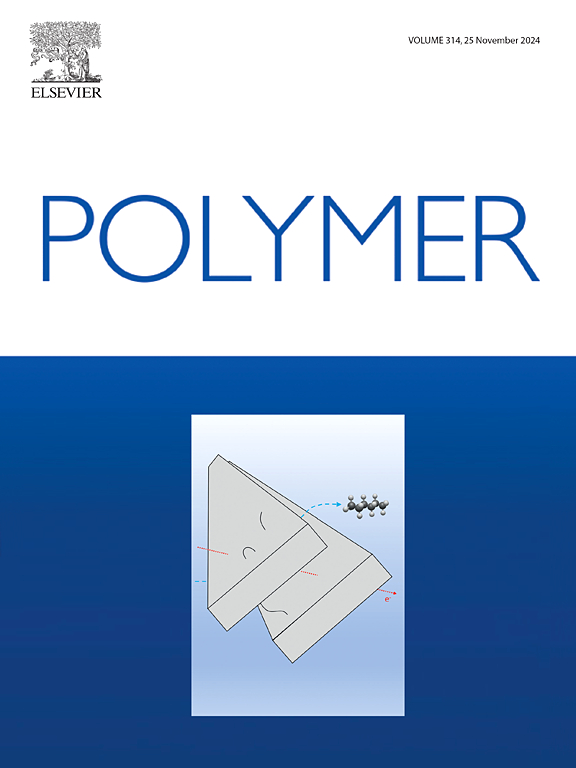Rheology of ethylene-vinyl acetate composites tuned by crosslinked rubber particles and carbon nanotubes
IF 4.1
2区 化学
Q2 POLYMER SCIENCE
引用次数: 0
Abstract
Rheology of polymer composites is crucial for production efficiency and performance of final products. Investigated here is influence of crosslinked rubber particles (CRPs) and carbon nanotubes (CNTs) on rheology of ethylene-vinyl acetate (EVA) composites. Transmission electron microscopy shows that CNTs are enriched in the EVA phase and do not penetrate into the CRPs. The reinforcement profiles of CRPs and CNTs are analyzed with the aid of time-concentration superposition principle, indicating that the reinforcement effects of these fillers are additive. While CNTs intensify and accelerate strain softening, CRPs are able to delay and weaken this effect. The synchronous evaluation of electrical resistance and rheology reveals that the conductive and rheological percolation networks are not entirely equivalent. The addition of CRPs improves elasticity and rheological and electrical recoveries of CNTs-based composites. The findings suggest that the combination of the two fillers synergistically improves composite properties, offering a foundation for optimizing advanced processing and application requirements.


通过交联橡胶颗粒和碳纳米管调节乙烯-醋酸乙烯酯复合材料的流变性能
本文章由计算机程序翻译,如有差异,请以英文原文为准。
求助全文
约1分钟内获得全文
求助全文
来源期刊

Polymer
化学-高分子科学
CiteScore
7.90
自引率
8.70%
发文量
959
审稿时长
32 days
期刊介绍:
Polymer is an interdisciplinary journal dedicated to publishing innovative and significant advances in Polymer Physics, Chemistry and Technology. We welcome submissions on polymer hybrids, nanocomposites, characterisation and self-assembly. Polymer also publishes work on the technological application of polymers in energy and optoelectronics.
The main scope is covered but not limited to the following core areas:
Polymer Materials
Nanocomposites and hybrid nanomaterials
Polymer blends, films, fibres, networks and porous materials
Physical Characterization
Characterisation, modelling and simulation* of molecular and materials properties in bulk, solution, and thin films
Polymer Engineering
Advanced multiscale processing methods
Polymer Synthesis, Modification and Self-assembly
Including designer polymer architectures, mechanisms and kinetics, and supramolecular polymerization
Technological Applications
Polymers for energy generation and storage
Polymer membranes for separation technology
Polymers for opto- and microelectronics.
 求助内容:
求助内容: 应助结果提醒方式:
应助结果提醒方式:


